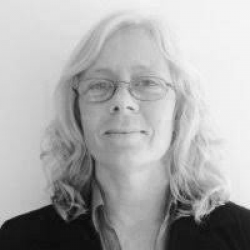Engagement | Karen Purcell
"It’s not just engagement of how we at science-serving institutions engage the public, but it’s also how we are engaged with the public. It’s critical because if we don’t have this two-way engagement, we’re going to end up in separate places, in silos.”

Interview Highlights:
How do you define "engagement"?
I have mixed feelings about the word “engagement” because I feel like engagement is very top-down. The way that we usually define it is, if I’m at an informal science institution, for example, then it’s my responsibility to get people to do something or to participate, and I just don’t think that that’s what engagement is all about. I think engagement is about people feeling that it’s meaningful to them to be part of something, and that only happens when they’re equal partners or they’re fully involved in it.
To me engagement means meaningful collaborations and meaningful partnerships with people of all backgrounds, from all regions, and with varying strengths, needs, and desires.
Do you measure engagement in the research that you do?
We think of engagement as successful if the participants are taking the work as their own and disseminating it themselves—in other words, if they’ve adapted a project to their community or to their niche.
What led you to study engagement?
I’ve worked at the Cornell Lab of Ornithology for the last 20 years. It’s a conservation and science organization, and conservation and science can’t be done without engagement. They can’t be done without the public, without meaningful collaborations with the world at large and with all communities. My work and the research that I do just doesn’t exist without engagement.
What specific projects have you done that focused on engagement?
Part of my time I work on the people side, and the other part of my time I work on the bird side, basically through the citizen science project Celebrate Urban Birds. We’re creating a project that is adaptable, flexible, and exciting that people who are new to birding and new to participatory science can engage in. The research that I do with people depends on trust and on working with people in a meaningful way in which we’re equal partners. I think that, for me, true engagement occurs when you have equity and you’re working with people in a way in which they feel equal. They need to feel that their opinions and experiences are valued and are an important part of the research. So in both the people and the bird work that I do, it’s about listening and working with people in ways in which they feel valued.
I also work on a National Science Foundation–funded research project—Examining Contextual Factors (ECF) for short—doing community-based participatory research. We work with approximately 15 communities across the United States who are leading research to better understand barriers to the sciences.
How and why do you think engagement matters for science learning or science communication?
I would pause and say, whose engagement? What science-serving institutions can do best is to become engaged themselves—the researchers, the outreach specialists—in communities. If I really want to work in a particular community in a meaningful way, then I need to understand and be in that community. I need to engage myself with that community. If we don’t have this two-way engagement, we’re going to end up in separate places, in silos. Then those of us working in science only talk to ourselves, we do research that is only heard by people who are like us. Why are we doing what we’re doing? I think every one of the researchers that I work with wants to make the world a better place. We want to conserve biodiversity. We want to preserve our planet, and we can’t do that sitting in our offices talking to ourselves and publishing in places where nobody can access.
What advice would you give practitioners who are trying to integrate your findings about engagement into their work?
The biggest and most meaningful thing, in the 20 years I’ve been working at this, has been to listen. Understand your own project like nobody else. Talk to the people who are part of your project. Understand what their definition of engagement is, when they are engaged, when they are not engaged. And co-create as much as possible: co-create your evaluation, co-create your measures of success, co-create your project and adapt it and continue adapting it as you learn more. That’s the biggest thing.
What are the big questions in informal science education, science communication, or even formal science education for the next five or 10 years regarding engagement?
But to me the biggest questions are about how we get out of our own bubbles. How do we get out of this space that we’ve created that is separate from the rest of the world? How do we do work that’s meaningful not just for a few people, but meaningful for many, and how do we become less exclusive, less separate, and more embedded in the communities that we want to work in?